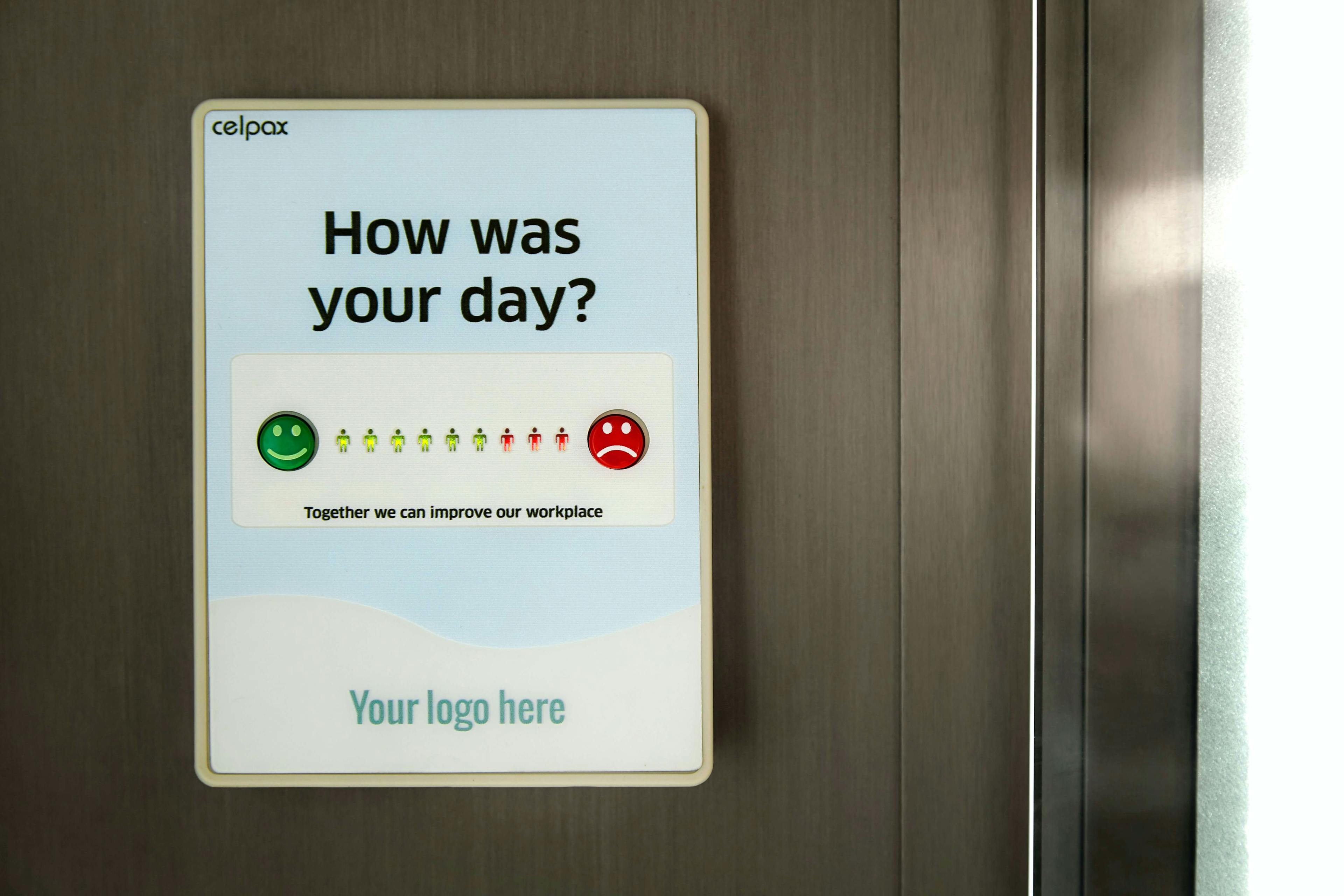Did you know that a company’s culture is often considered its immune system? Organizational culture shapes the way employees interact, make decisions, and ultimately, drive business success. In today’s competitive market, understanding the different types of organizational cultures and their impact on the company’s performance is crucial for leaders who strive to create a thriving work environment. Are you ready to dive into the world of organizational culture and unleash the full potential of your company?

Key Takeaways
Organizational culture is the shared values, beliefs, and practices that guide decision-making and influence employee behavior.
Leaders play an integral role in shaping organizational culture by embodying company values, promoting open communication & investing in employees.
Investing in a strong organizational culture can create a foundation for business success through increased growth & engagement.
Defining Organizational Culture
Organizational culture, often referred to as company culture or corporate culture, encompasses the shared values, beliefs, and practices that shape an organization’s culture, guiding decision-making and influencing employee behavior. An important organizational culture is like a strong organizational culture, where the harmonious collaboration of various instruments creates a powerful symphony. In this context, the instruments represent the employees, and the conductor is the company’s leadership, who plays a crucial role in shaping the company’s culture and upholding the organization’s core values.
A positive culture can lead to increased employee commitment and satisfaction, ultimately translating into better business outcomes. The foundation of a strong culture lies in the organization’s core values, which serve as the guiding principles for decision-making and behavior. Leaders can foster a culture that supports the achievement of business objectives when the company’s values are in harmony with these goals.
However, not all organizational cultures are created equal. There are various types of cultures, each with its distinct characteristics and focus. Some prioritize innovation and risk-taking, while others emphasize stability and adherence to established procedures. Understanding the different types of cultures can help leaders assess their current culture and identify the desired culture that aligns with the company’s vision and objectives.
Keep in mind, current organizational culture is dynamic and evolves over time due to factors such as changing market conditions, company growth, and shifts in leadership. By continuously assessing and adapting the organization’s culture, leaders can ensure that it remains resilient and relevant, just like a strong immune system.
The Four Core Types of Organizational Culture
The four core organizational culture types are clan, adhocracy, market, and hierarchy, each with unique characteristics and approaches to achieving business success.
We’ll now explore the defining features of each culture type and their impact on the organization’s performance in more detail.
Clan Culture
Clan culture is characterized by strong interpersonal bonds, collective values, and an emphasis on cooperation and collective effort. Often found in smaller companies with a family-like atmosphere, clan culture prioritizes employee involvement, teamwork, and open communication. This type of culture creates a nurturing environment, where employees feel connected, supported, and inspired to contribute their best efforts.
Organizations like Tom’s of Maine, Redmond (Real Salt), and Chobani are examples of companies with a clan culture, where leaders place a strong emphasis on their employees’ well-being. These companies may undergo organizational culture change to adapt to new market conditions or strategic goals, but their core values of collaboration and employee-centricity remain intact.
In a clan culture, the following cultural values and characteristics are often emphasized:
Mentorship and apprenticeship, allowing competencies and values to be passed down from one generation to the next
Emphasis on teamwork and open communication, fostering high employee engagement
Excellent customer service and a strong brand reputation
Cultivating a clan culture within your organization begins with seeking input from your employees. By actively listening to their ideas and concerns, leaders demonstrate their commitment to inclusiveness and collaboration, reinforcing the values that lie at the heart of a clan culture.
Adhocracy Culture
Adhocracy culture is distinguished by its emphasis on:
Innovation
Risk-taking
Creativity
Experimentation
This culture type is typically seen in start-ups and companies focused on growth and adaptability, where the ability to embrace change and challenge the status quo is highly valued.
Adhocracy culture is characterized by:
Prizing creativity and innovation
Placing achieving results above rigid procedures
Flattened organizational hierarchy with less focus on formal authority
Strong emphasis on trust and collaboration among employees
Flexible environment that enables quick adaptation to evolving market conditions and seizing new opportunities
Companies like Apple, Google, and Facebook are known for their adhocracy culture, where employees are encouraged to think outside the box and explore new ideas. In larger organizations, adhocracy culture may be confined to certain departments or business units, ensuring that the organization remains creative and competitive in the market.
Adhocracy culture creates an environment that values innovation, risk-taking, and collaboration, thereby empowering employees to take ownership of their work and contribute to the organization’s growth and success.
Market Culture
Market culture is characterized by competition, performance-based rewards, and an emphasis on results and efficiency. Companies with a market culture focus on achieving business success through customer satisfaction, market share, and financial performance. This type of culture is often found in organizations that prioritize growth and expansion, where employees are driven to excel and outperform their competitors.
The benefits of market culture include improved efficiency, competition, and a focus on achieving results. With an emphasis on customer satisfaction and market share, organizations with a market culture are often agile and responsive to changing customer needs and market conditions. However, potential drawbacks include increased pressure on employees to perform, elevated levels of competition, and a focus on short-term results.
Notable examples of companies with a market culture include:
Amazon
Zappos
General Electric
Tesla
Warby Parker
Wells Fargo
Goldman Sachs
Blue Cross Blue Shield
Chevron
These organizations thrive in competitive industries where a relentless focus on results and customer satisfaction are critical for success.
In a market culture, the role of leaders is paramount in:
Setting performance expectations
Fostering a sense of accountability
Ensuring the necessary resources and support are available for employees to excel in their roles.
Hierarchy Culture
Hierarchy culture is distinguished by its emphasis on rules, regulations, and structure. Often found in large organizations with well-defined roles and responsibilities, hierarchy culture values stability and adherence to established procedures. This type of culture provides a strong foundation for risk management and operational efficiency, ensuring that the organization remains compliant with industry standards and regulations.
The advantages of hierarchy culture include improved risk management, stability, and operational efficiency. By fostering a sense of order and predictability, hierarchy culture provides employees with clear expectations and guidelines for their work. However, the drawbacks of hierarchy culture may include a lack of innovation, agility, and responsiveness to sudden changes in markets and industries.
In a hierarchy culture, the responsibility of setting the tone and maintaining the organization’s structure lies heavily with leaders. By emphasizing the importance of following established procedures and adhering to the company’s values, leaders ensure that the organization remains compliant and operates efficiently.
Organizations with a hierarchy culture may need to balance the stability and structure provided by this culture type with the need for innovation and adaptability. By incorporating elements of other cultures, such as adhocracy or clan culture, companies can create a more dynamic and flexible work environment that fosters both efficiency and creativity.
Additional Organizational Culture Models
While the four core types of organizational culture provide a comprehensive framework for understanding the different ways companies can approach their culture, researchers have developed various other models that offer distinct perspectives on organizational culture. These models can help leaders better understand the nuances of their organization’s culture and identify areas for improvement or growth.
One such model is Daniel Denison’s model, which describes four general dimensions of organizational culture:
Mission
Adaptability
Involvement
Consistency
This model is used to diagnose cultural issues within organizations, allowing leaders to identify where their culture may be misaligned with the company’s strategic objectives.
Another model is the Groysberg, Lee, Price, and Cheng model, which identifies additional varieties of organizational culture. This model expands on the four core types of culture and provides a more detailed classification of culture types, including:
Entrepreneurial culture
Engineering culture
Bureaucratic culture
Collaborative culture
Competitive culture
Innovative culture
Customer-focused culture
This model helps leaders to gain a deeper understanding of the factors that influence their organization’s culture.
Gerry Johnson’s model, also known as the cultural web, is another model that outlines and impacts organizational culture. It encompasses:
Power structures
Control systems
Rituals
Stories
This provides a comprehensive framework for understanding the various elements that shape an organization’s culture. Examining these different models allows leaders to gain valuable insights into their organization’s culture and pinpoint opportunities for growth and development.
Assessing and Changing Organizational Culture
As organizations evolve and grow, the importance of assessing and adapting their culture to maintain alignment with the company’s vision and goals increases. This involves using tools like the Organizational Culture Assessment Instrument (OCAI) and implementing steps for cultural transformation that engage employees and leaders in the process.
Tools for Assessing Culture
Assessing an organization’s culture is a crucial step in understanding its strengths and weaknesses and identifying areas for improvement. Various tools are available for assessing culture, including surveys, interviews, and frameworks.
Culture surveys, focus groups, employee engagement surveys, and pulse surveys are some examples of surveys used to assess organizational culture. These tools can help leaders gather valuable insights into employee perceptions of the company’s culture, identify areas of alignment or misalignment, and uncover opportunities for growth and development.
The Organizational Culture Assessment Instrument (OCAI) is another valuable tool that can help leaders assess their organization’s current and preferred workplace cultures. Based on the Competing Values Framework, the OCAI measures the organization’s culture across the four core types of culture:
Clan culture
Adhocracy culture
Market culture
Hierarchy culture
The OCAI helps leaders understand the gaps between their current culture and the desired culture.
Utilizing these tools for cultural assessment enables leaders to gain valuable insights into the factors that affect employee behavior, engagement, and overall business performance. This information can then be used to develop targeted strategies for cultural change that align with the company’s vision and objectives.
Steps for Cultural Change
Cultural change is often a complex and challenging process that requires a clear understanding of the organization’s current culture, desired culture, and the steps necessary to bridge the gap between the two. Facilitating cultural change requires leaders to first identify the desired culture and construct a transformation plan that tackles the key components of cultural change: leadership, ownership, community, and purpose.
The first step in cultural transformation is to assess the organization’s current culture and identify the desired culture that aligns with the company’s vision, mission, and core values. This can be achieved through employee surveys, defining and measuring culture attributes, and reviewing stories and values to gain insight into the organization’s existing culture.
Once the desired culture has been identified, leaders must develop a plan for transformation that addresses the key components of cultural change. This includes:
Engaging employees and leaders in the process
Fostering a sense of ownership and accountability
Building a sense of community that supports the desired culture
Finally, leaders must monitor the progress of the cultural transformation, adjusting their strategies as needed to ensure that the organization’s culture continues to evolve and align with its vision and objectives. By following these steps, leaders can successfully navigate the complex process of cultural change and create a thriving work environment that supports the company’s growth and success.
The Role of Leadership in Shaping Organizational Culture
Leaders play a critical role in shaping organizational culture, as they set the standard for company values, encourage open communication, and promote employee growth and development. As cultural leaders, they serve as the guiding force that helps the organization transition from its current culture to the desired culture, fostering cultural innovation and maintenance.
A crucial aspect of leadership in shaping organizational culture is the leaders’ embodiment of the company’s values through their actions and decision-making. By consistently demonstrating the desired behaviors and attitudes, leaders serve as role models for their employees and set the tone for the organization’s culture.
Moreover, leaders have a central role in promoting open communication within the organization. By actively seeking employee feedback and creating a safe space for dialogue, leaders can ensure that employees feel heard and valued, which is essential for building a strong and healthy culture.
Finally, it’s incumbent upon leaders to support employee growth and development by providing learning opportunities, skill development, and career advancement options. By investing in their employees’ success, leaders demonstrate their commitment to the organization’s culture and contribute to the overall wellbeing of the company.
Building a Positive and Inclusive Culture
In today’s diverse and global workplace, building a positive and inclusive culture is more important than ever. An inclusive culture values diversity, equity, and inclusion, and seeks to create a work environment where all employees feel valued, respected, and supported. This, in turn, fosters collaboration, innovation, and psychological safety, which are essential for driving business success.
A key aspect of cultivating an inclusive culture involves promoting diversity and ensuring the organization’s workforce mirrors the varied perspectives and backgrounds of its customers and stakeholders. This can be achieved through diverse recruiting efforts, inclusive hiring practices, and the ongoing commitment to fostering a culture of equity and inclusion.
Another important aspect of an inclusive culture is fostering a healthy work environment that encourages collaboration, innovation, and psychological safety. By creating a culture where employees feel comfortable sharing their ideas, challenging the status quo, and taking risks, organizations can unlock the full potential of their workforce and drive better business results.
Finally, an active involvement from leaders is required in building and maintaining a positive and inclusive culture. This includes:
Setting clear expectations for behavior
Promoting diversity and inclusion initiatives
Consistently demonstrating their commitment to the organization’s core values.
The Impact of Organizational Culture on Business Success
The impact of organizational culture on business success cannot be overstated, as a strong and healthy culture can attract top talent, increase employee engagement, and ultimately drive better financial performance and growth. Research has shown that organizations with healthy cultures have better prospects of revenue and stock growth. In particular, they are 1.5 times more likely to see 15 percent or more revenue growth over three years and 2.5 times more likely to witness significant stock growth in the same time frame..
A strong culture also plays a critical role in attracting and retaining top talent. With 77 percent of job seekers evaluating a company’s culture before submitting an application, and nearly half of employees willing to switch jobs for a lower-paying role in a company with a better culture, it’s clear that an organization’s culture is a key factor in the war for talent.
Moreover, a strong organizational culture has a significant impact on employee satisfaction, with approximately 65% of employees remaining in their role due to this element. This high level of satisfaction can influence employee behavior, leading to increased productivity, innovation, and overall business performance.
By investing in the development and maintenance of a strong organizational culture, companies can create a foundation for success that drives growth, attracts top talent, and fosters a healthy and productive work environment.
Summary
In conclusion, organizational culture is a critical aspect of a company’s overall success, shaping the way employees interact, make decisions, and ultimately drive business results. By understanding the different types of organizational cultures, assessing and adapting the company’s culture, and investing in strong leadership, organizations can create a thriving work environment that supports their growth and success.
As the competitive landscape continues to evolve, the importance of a strong and healthy organizational culture cannot be overstated. By taking the time to assess, adapt, and invest in their culture, leaders can unlock the full potential of their workforce and ensure that their organization remains resilient and relevant in the face of change.
35 Strategies to Create an Effective Employee Feedback Culture in 2024
Here you will find 35 strategies which can be utilized to build such impactful feedback cultures within any organization.Frequently Asked Questions
What are the 4 types of organizational culture?
There are four types of organizational culture: clan, adhocracy, market and hierarchy. Each one serves a unique purpose within the organization.
What is Organisational culture and examples?
Organizational culture is the set of values, beliefs, attitudes, systems, and rules that outline and influence employee behavior within an organization. Examples include a company's dress code, office layout, perks program, social calendar, good practices, healthy behavior, ethical values, and expectations. This culture reflects how employees, customers, vendors, and stakeholders experience the organization and its brand.
What organizational culture is and why it is important for an organization?
Organizational culture is the shared values, beliefs, behaviors, and practices that define an organization. It helps to shape the way decisions are made and can make or break a company. Established by leaders and communicated through various methods, it sets expectations for employee perceptions, behaviors, and understanding.
How can an organization assess its current culture?
Organizations can assess their current culture using surveys, interviews, and the Organizational Culture Assessment Instrument (OCAI) to gain insights into employee perceptions and identify areas for improvement.
What role do leaders play in shaping organizational culture?
Leaders are integral to creating an organizational culture, by setting an example of company values, promoting open communication and encouraging employee growth and development.


